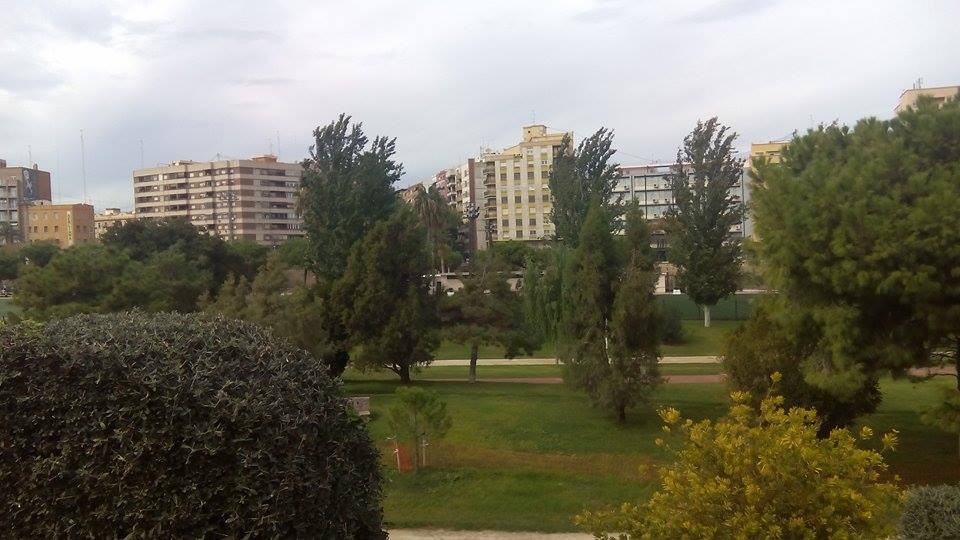
One of the things that I love about Spain is seeing the way in which their citizens can construct something that's both useful and environmentally-friendly, as well as being of cultural interest, from something that was either in ruins or inhabitable. An example of this is the kind of spaces that I found at Madrid Río, Estación Príncipe Pío (Madrid), Sabatini Gardens (Madrid), and finally in Valencia with the famous Parque del Turia. (For all of the aforementioned places, you will find a very thorough review of each on my profile, in case you are interested in visiting them. )
The first time that I ended up going into the Jardín del Turia was merely accidental, as I had found myself in Valencia and decided to go out without a map thinking that I would find all of the monuments just by walking for a couple of blocks (clearly I have got used to the closeness of all of Madrid's monuments in this respect, which is where I currently live). I remember asking a woman on the tram for directions, who recommended that I walk down a couple of streets until I reached some "sports pitches and parks that are located where a river bed used to be" to get to Valencia's cathedral. It was very weird for me to see a bridge that crossed a park where there should have been a river, but it honestly didn't really grab my attention in the beginning.
I continued my journey in search of the cathedral, but, after not being able to find it, I decided to return to the Jardín del Turia and carry straight on until I found the Ciutat de les Arts i les Ciències. However, it was only after having walked four kilometres that I realised that I was actually heading in the opposite direction. If I hadn't been mistaken, it's very likely that I wouldn't have seen what is, nowadays, one of the largest parks in Spain and the so-called "beating heart of Valencia" in such depth.
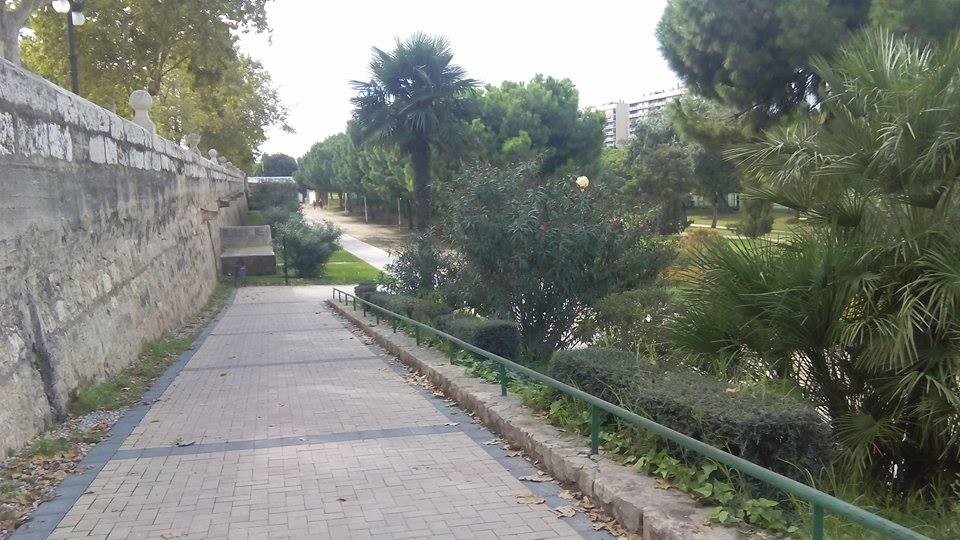
A little bit of history never hurts...
I am sure that, from having read the previous paragraph, you will be asking the same question that I was: "and where has the river gone exactly? ". One of the first things that people usually think is that it has dried out, but the story is actually much more interesting (and a little more disastrous) than that.
It turns out that, in 1957, the city of Valencia suffered what is now remembered as the "Great Flood of Valencia". On that fateful October day, the rain caused the water level of the Turia river to rise by at least three metres, which caused disasters across the entire city and led to the deaths of many. It took several months for the city to get back on its feet and return to a state of normality. For the citizens, it seemed impossible to comprehend that something like this could happen again, so the government made the decision to alter the course of the river in order to keep the residents safe.
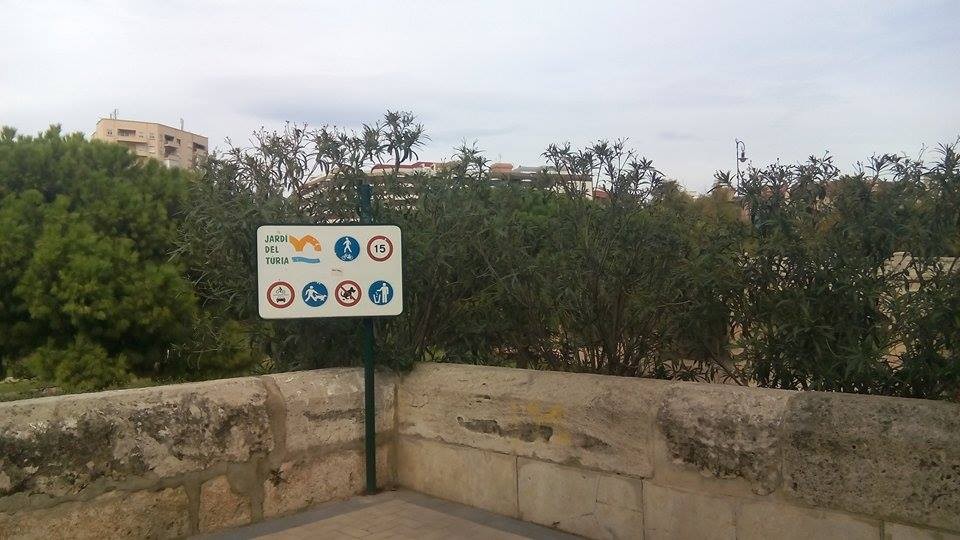
It's an incredible thing when the government acts in response to the demands and wishes of its people. On this occasion, it wasn't the government who came up with this amazing idea of creating a park to fill this area where the old river bed once was, but actually the citizens themselves whilst famously reciting (obviously in Catalan), "El riu es nostre i el volem verd", which, in English, translates as "the river is ours and we want it green".
In 1987 (30 years after the tragic event), the Jardínes del Turia were finally inaugurated. It didn't take them a lot of time to create them considering that the area is 9 kilometres long and is divided into 18 main sections.
Making your way around the gardens
As I mentioned earlier, the riverbed of the Turia in this area was 9 kilometres long, so there are plenty of distractions and interesting things to see. Let's assume that you are going to start your walk around the park from the far end, where the Bioparc is located.
Bioparc replaces what was previously the city zoo, but the concept is exactly the same, as it's an area where you will be able to coexist with both nature and the animals in their incredible habitats.
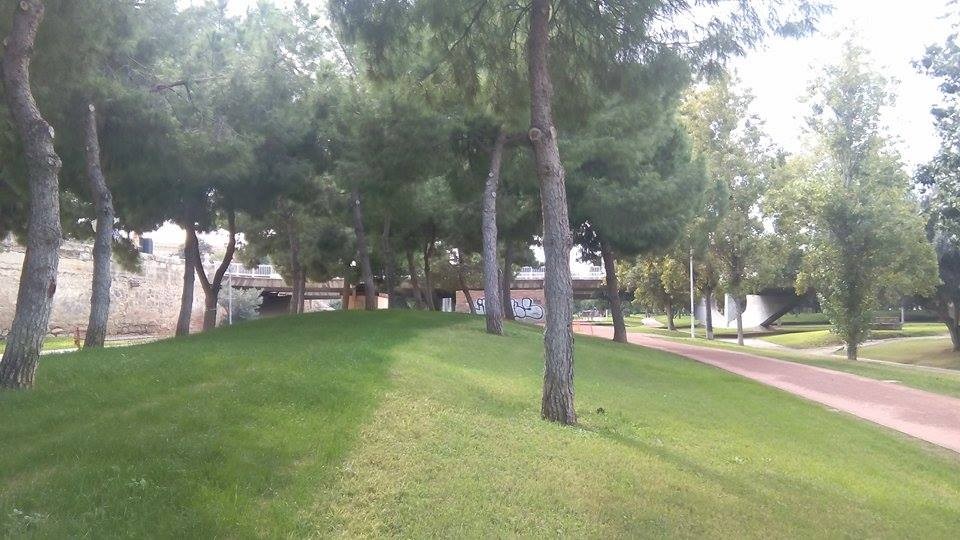
After walking for a short while, you will enter what is officially considered to be park. It's important to mention that you will come across many bridges and pedestrian walkways: many of them are very new (which you will notice in their construction), but some of the others are very old, like the Puente Real, for example, which is more than 400 years old.
As you are walking along, you will come across the Casa del Agua and, a little bit further along, you will start to see several different sporting facilities. The first thing that you will see on your walk will be a variety of different athletic tracks, although it won't be strange for you to find football pitches and tennis courts, as well as rugby pitch and a baseball field. Don't forget that one of the main aims of this environmentally-friendly site is that it's a place where families can come together and play sports, irrespective of how old people are.
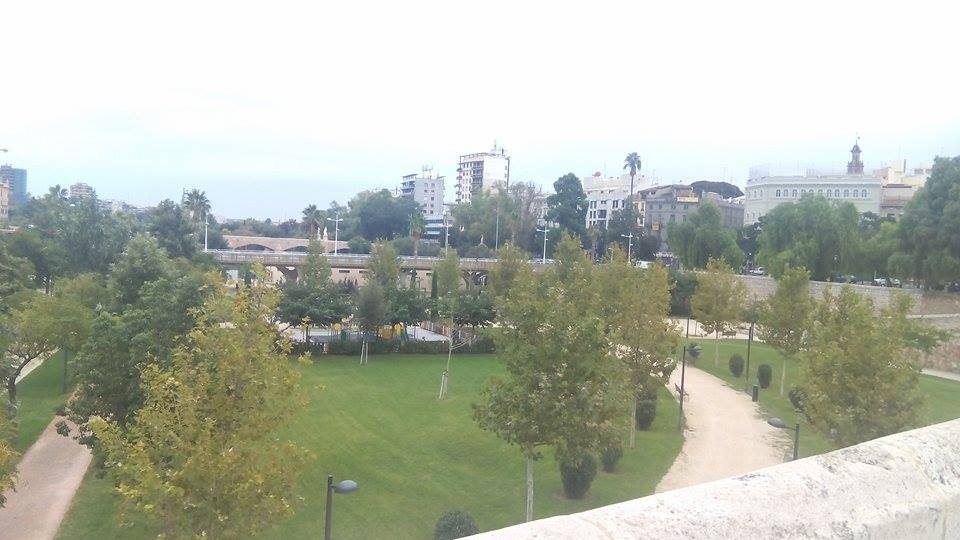
Other places that you will also find are strongly linked to nature and the environment in general because Valencia is very much an environmentally-friendly city in every sense of the word, which is demonstrated by the botanic garden, the flower bridge, and the hundreds of trees, flowers and bushes that you will find whilst walking around (all of them trimmed and well looked after). If you are very observant, whilst walking, you will be able to find some species of animals and, above all, several lizards on the stones used in the structure of the bridges.
Moving onto the last stretch of the walk, you will see a glimpse of the Ciutat de les Arts i les Ciències, but not before you come across the Palau de la Música. This building has purely cultural objectives, as it's commonly used to hold exhibitions, congresses, cinema screenings, and musical performances.
Now comes the best part of all! After the Palau de la Música, you will find what you have been eagerly waiting for (... the largest modern attraction in Valencia! ), the Ciutat de les Arts i les Ciències (The City of Arts and Sciences). It's here where you will be left fascinated: it is one of the most impressive and imposing structures that you will ever see in your life. In this area, you will find all of the buildings that make up the complex, amongst them: L'Àgora, El Museu de les Ciències Príncipe Felipe, L'Umbracle, L'Hemisfèric, El Palau de les Arts Reina Sofia, and, finally, L'Oceanogràfic. It's really worth going to see it, and it's absolutely one of those places where the time will absolutely fly by. If you are interested in visiting it, you can find more detailed information about the prices, ways of getting there, opening hours and recommendations in a review that I wrote about the complex on my profile.
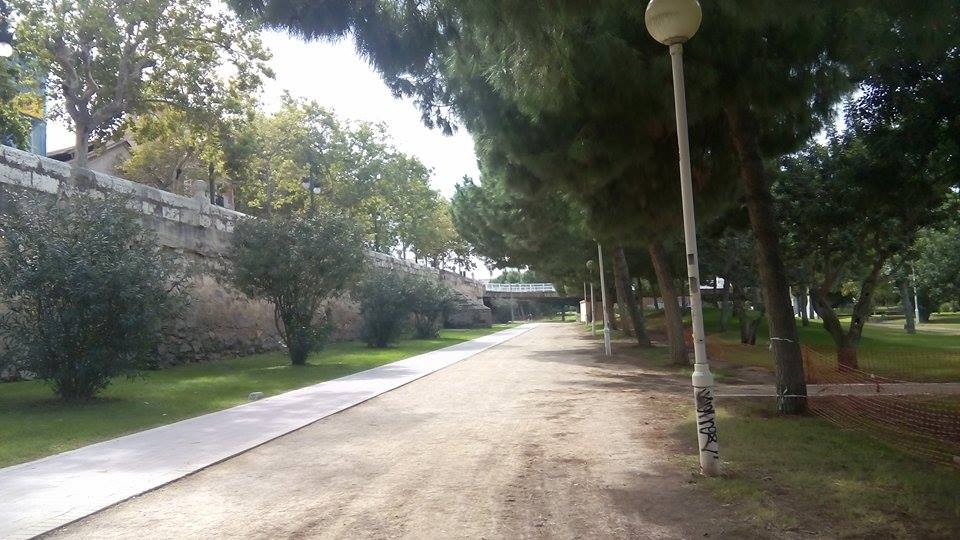
How much does it cost to visit the gardens?
One of the best things about the park is that it is free to visit for it having been designated as a recreational and sporting area for the residents of Valencia.
How do you get there?
There are many different ways of getting to the Jardín del Turia, however knowing how to get there will depend upon which part of the gardens you want to see. I will leave you with three different routes that you could take: the first for starting at Bioparc; the second in middle part of the Puente Real; and the third, from the Ciutat de les Arts i les Ciències.
Option 1 (Bioparc):
If you travel by the city's metro system, you can take either line 3 or 5, alighting at the station, Nou d'Octubre, but you will still have to walk for another ten minutes to get to the park.
You can also take the bus on any of the following routes: 3, 29, 61, 67, 81 and 95.
Option 2 (Puente Real):
This option ends up being one of the most convenient because the city centre is located very close to it. You could go for a walk in the city and visit Valencia Cathedral or the Torres de Serranos before starting your walk around the gardens from the middle section from there.
Getting there via metro is not particularly recommendable because the closest station is Alameda, which is a ten minute walk away. If you want to start from this point, the best thing to do would be to travel by bus and alight at the stop by the Plaça de l'Ajuntament on the number 5 (green bus).
Option 3 (Ciutat de les Artes i les Ciencies):
Although I was a huge fan of this place, I recommend leaving it to the very end; let it be the dessert that rounds out a delicious meal.
I don't recommend travelling there by metro because, like option 2, the closest station is (again) Alameda and it will take you 15 minutes to get to the gardens on foot.
There are several bus routes that pass by this area: 1, 13, 14, 15, 19, 35, 40 and 95.
What time do the gardens close?
The gardens don't have a closing time - you can enjoy the park whenever you want.
Recommendations and interesting facts
- Something that I forgot to mention earlier is that many of Valencia's citizens, especially the student population, use bicycles to get from A to B around the city. Valencia has a public bicycle renting scheme called Valenbisi, which has an annual usage cost of 30€ and allows the customer to use any of the bicycles in the nearest docking station without any restrictions on distance travelled. Rather than purchasing an annual membership, you can also pay to rent the Valenbisi bikes by day, so I recommend that you consider this as an option for your trip to Valencia.
- The bicycle lanes in Valencia are both very well-signposted and frequently used, whilst, at the same time, being very much respected by bus drivers. In fact, if you choose to travel around the city by bike, one option would be to travel along the cycle path found within the Jardín del Turia; you only need to take one of the access ramps before venturing around and seeing the largest part of the park in just a few short minutes. The pedestrianised are and the cycle path are separated from one another, so you will be able to travel around the park freely and see what I have just described to you for yourself.
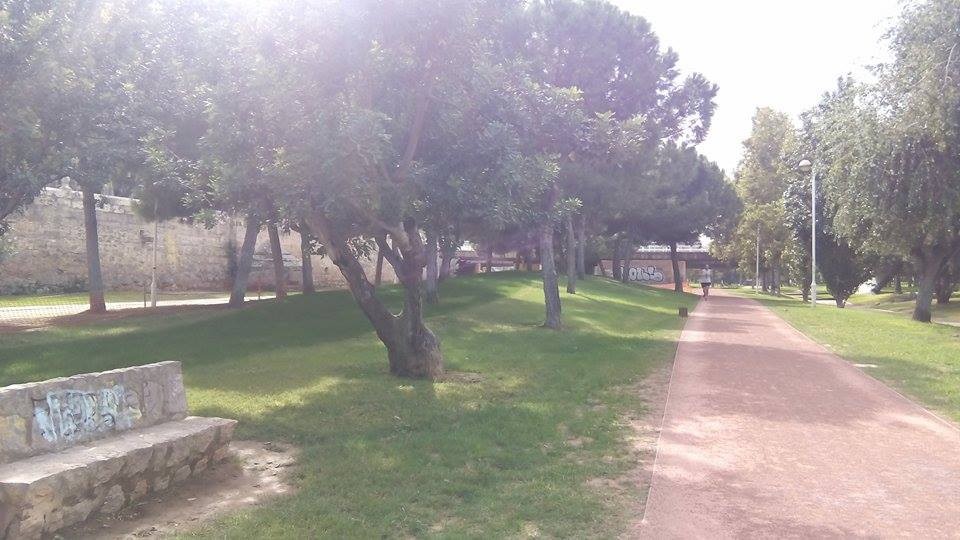
- Rent a bike and have a good time whilst you exercise, are left astounded by the surroundings, and form part of the environmentally-friendly movement that the city is focusing on; it wasn't until I travelled around by bike that I could finally see all that Valencia had to offer properly.
- They say walking 9 kilometres is easy, but doing so whilst wearing inadequate footwear can ultimately end up ruining your day as a tourist. I recommend leaving fashion to one side and wearing some decent trainers, as well as some sun cream that will protect you against the strongest rays, especially if you are visiting the city in the summertime.
